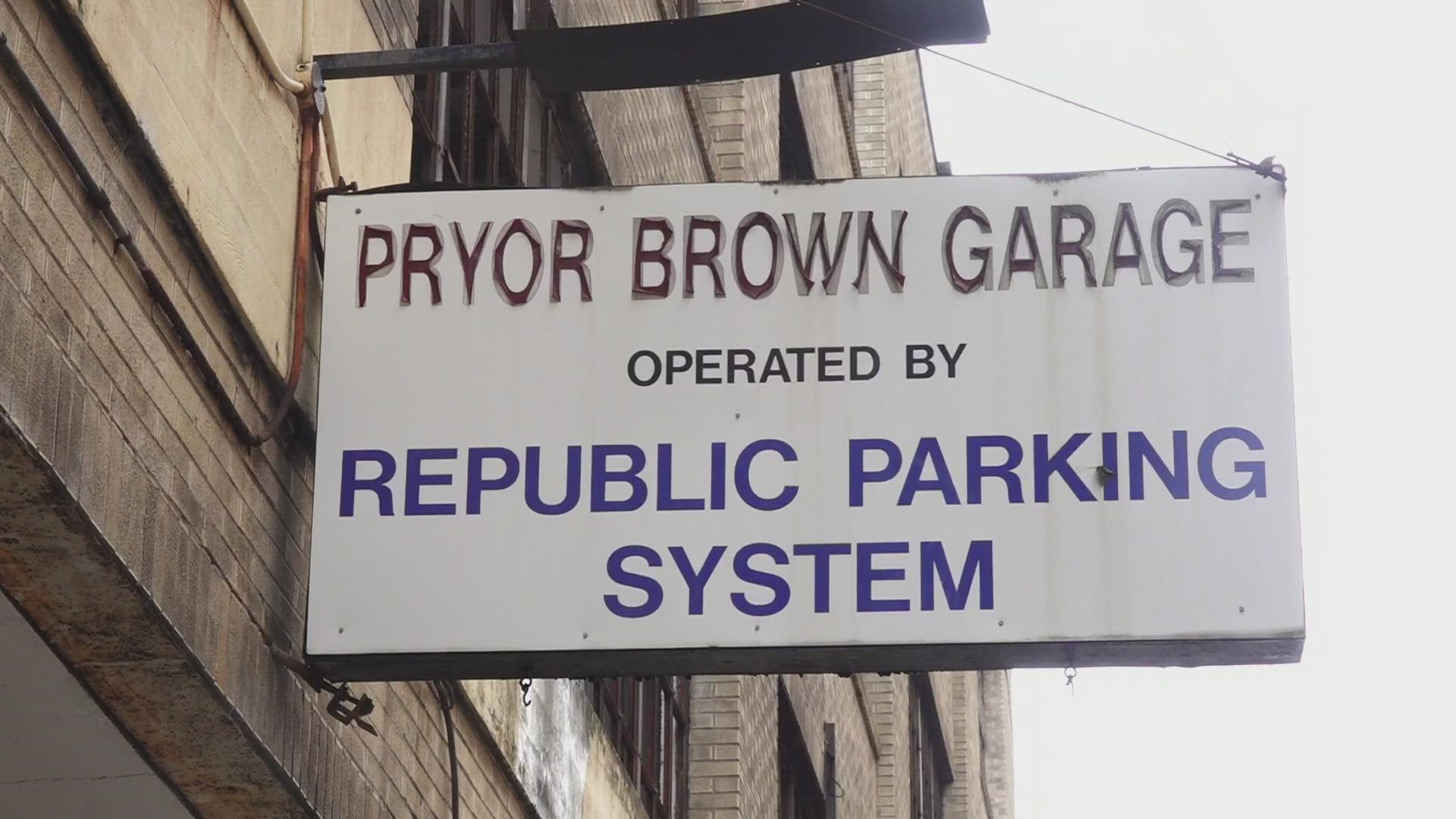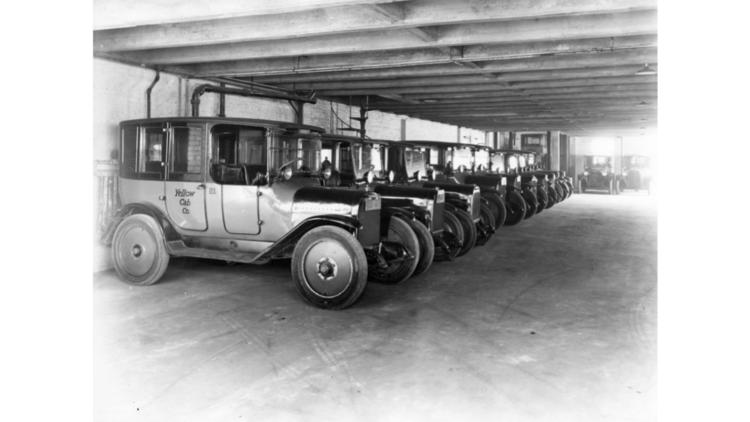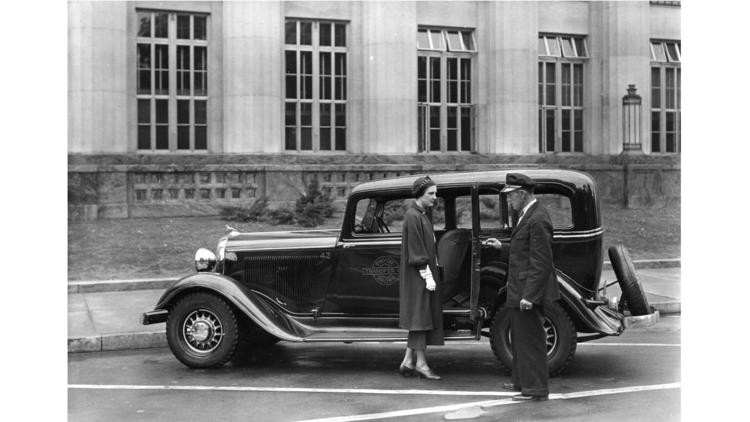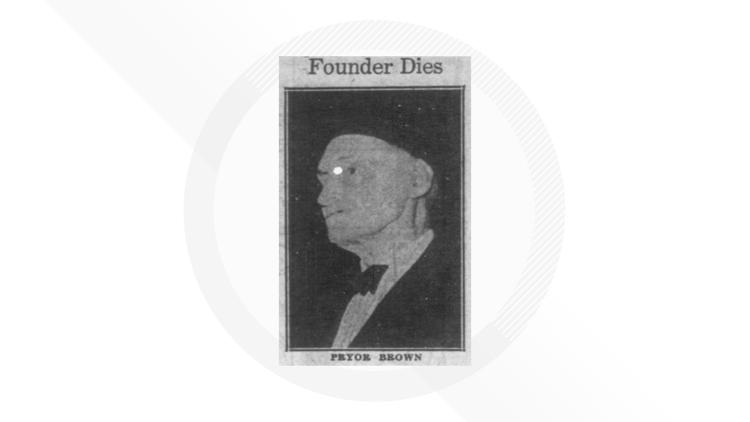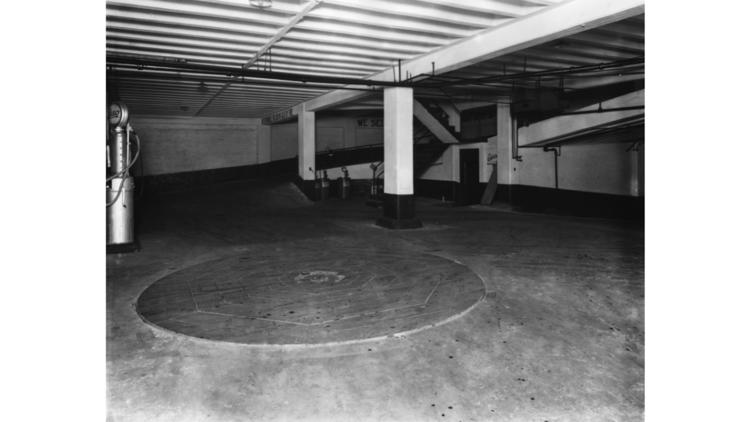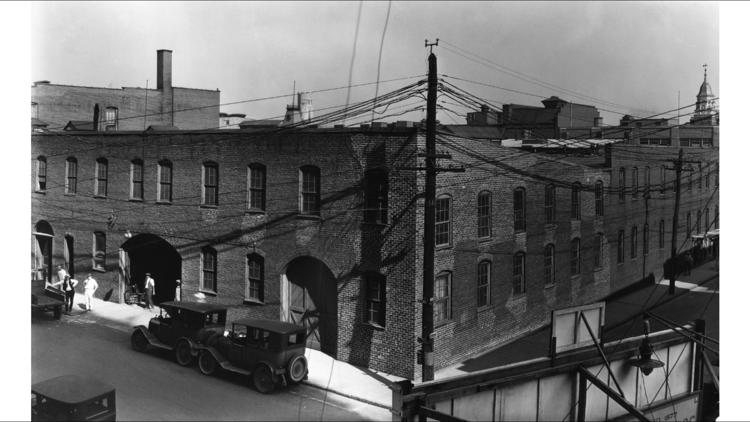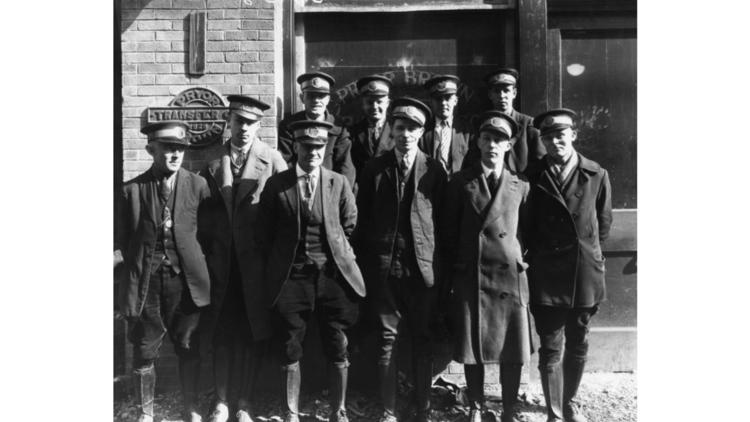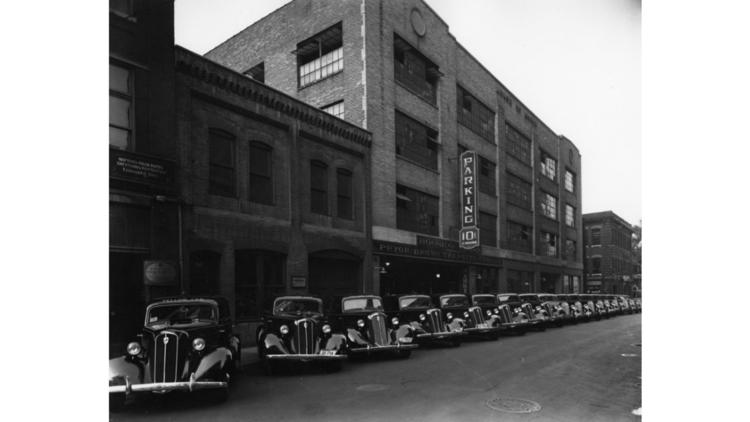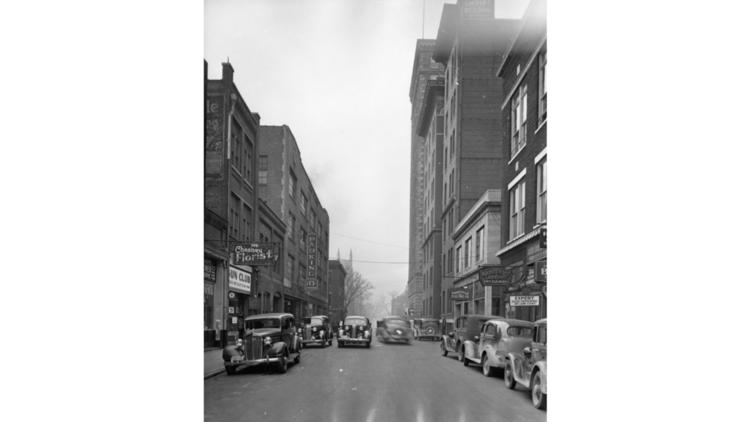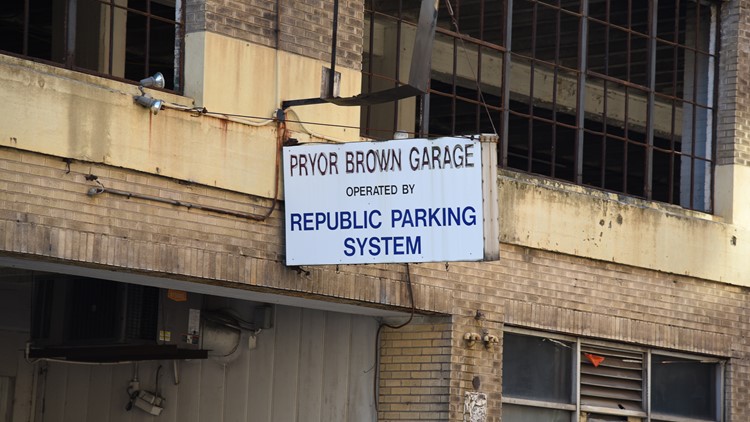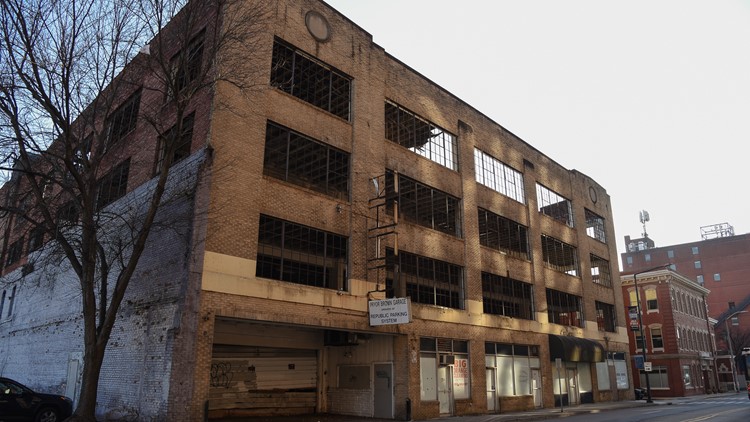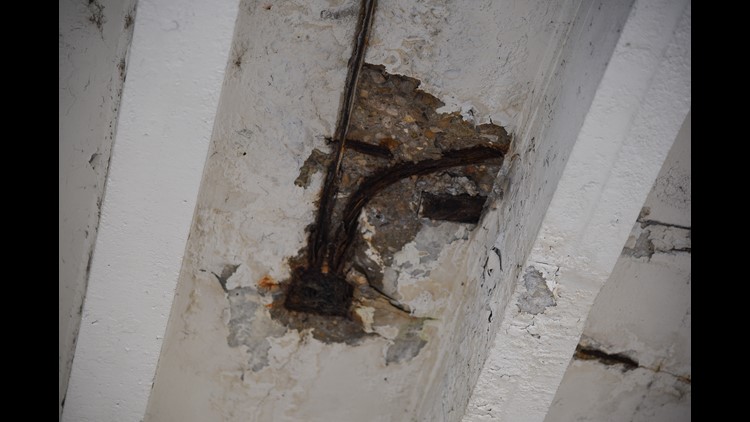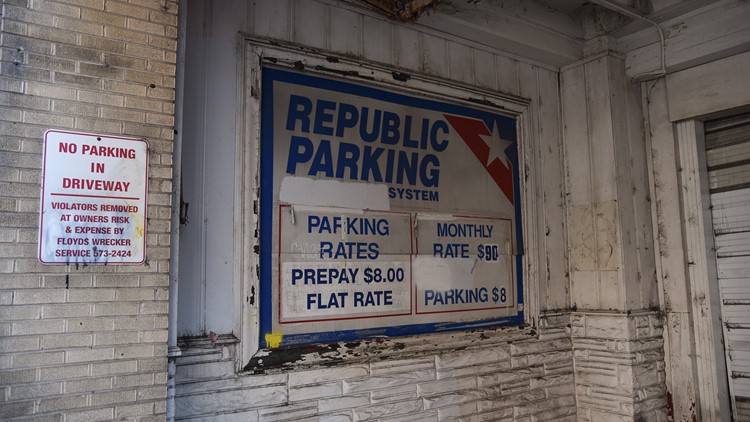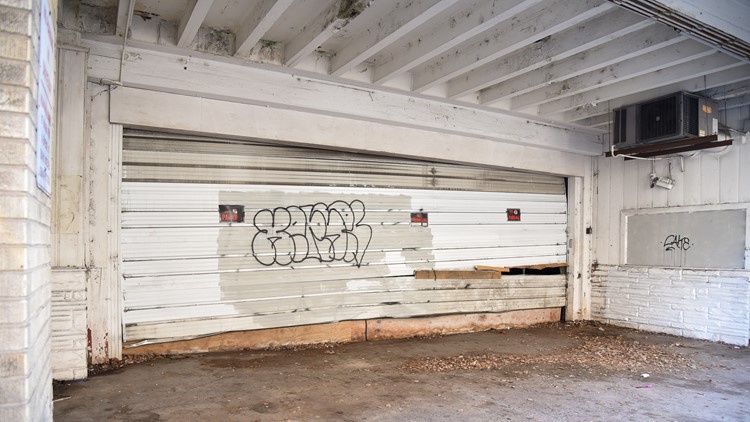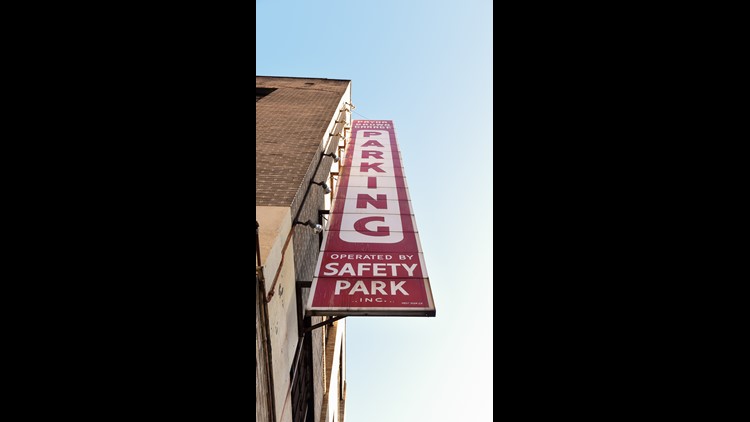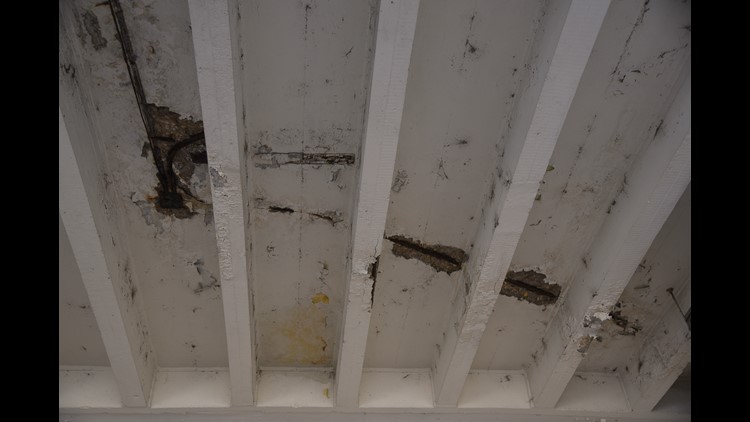KNOXVILLE, Tenn. — The crumbling tan brick parking garage on Church Avenue may not look like much now, but nearly 100 years ago, it helped change the way people experienced Downtown Knoxville.
It all started with a man named Pryor Brown who delivered mail on horseback during the Civil War.
According to Knoxville historian Jack Neely, Brown was well known as the city’s “horse guy” in the 1880s and ‘90s. He owned a livery stable, ran a horsedrawn “autobus” to take people downtown and built mail wagons for the U.S. Post Office.
FULL SERIES: Explore Tennessee's Abandoned Places
“If it was horse related, he wanted to talk to you about this,” Neely said. “If you needed a place to put your horse, if you needed to borrow a horse, he could take care of you.”
By the 1920s, Downtown Knoxville was filled with the hustle and bustle of people traveling for both business and leisure.
“If you see pictures of downtown from the air, you can see that there are no empty spaces. Every place had buildings on it,” Neely said. “There were no parks and there are no parking lots.”
Without parking spaces, everyone arrived the same way: the streetcar.
“People didn't expect to get to leave their car around downtown, even rich people rode the streetcar,” Neely said.
Soon, though, cars became more popular and people needed places to park.
Pryor Brown took a chance.
“In the 1920s, he was an old man, but he said, ‘I hate cars. I would rather take one horse over a whole parking lot full of cars, but that’s what I have to deal with,’” Neely said.
The man who made his living on horses started building one of the country's first parking garages in 1925 on the side of his Church Avenue livery stable, the Pryor Brown Transfer Company.
Photos: Pryor Brown Garage through the years
“It's fascinating to think of this idea of the livery stable literally evolving into a parking garage,” Neely said. “A place where people would rent or leave horses changed into a parking garage, which is kind of the modern version of the old livery stable.”
Finished in 1929, the “House of Brown” was more than just a place to park. It ran a taxi service, handled freight from the nearby railway and delivered mail for the post office.
Neely said it helped modernize downtown. Along with the garage, the block also housed retail spaces, a revolutionary concept for the time.
“It's been used as kind of a model by architects who had pictures of it back when it was functional before they closed it. The architects used pictures of it to show how parking garages should work,” Neely said.
For decades, attendants parked the cars and rode a simple elevator up and down the four-story garage to retrieve them when customers returned.
“This may be, as far as I know, the oldest or one of the oldest parking garages in America,” Neely said.
Cars drove in and out of the garage until 2013.
A project memo from that year obtained by 10News suggested the "repair of the garage would not be feasible due to the cost."
The owners wanted to demolish it. Local groups stepped in, promoting the historic structure’s preservation.
Abandoned Places: Pryor Brown Garage
“People kind of scoff and say, ‘Well, how can a parking garage be historic?’ And I think history is about what's important to people, and if parking is not important to people, that's great news. We don't have to park anymore, but as long as we have to park, the parking garage is historic,” Neely said.
In 2016, there were ideas to turn it into a mixed-use residential building, but plans never came together.
Meanwhile, with its future uncertain, the garage continued to slowly sag near Market Square. The roof collapsed piece by piece, first in 2015 and then again in 2021.
In September 2021, the sidewalk and streets around the garage on Church Avenue and Market Street closed for over a week so the owners could make sure its cracking brick walls and crumbling roof wouldn’t collapse.
A year later, in September 2022, video from a 10News investigation showed the other side of the garage’s roof caved in as well. However, the city said no formal notices have been issued since the 2021 emergency repairs.
The Pryor Brown Garage’s fate may be sealed in 2023.
On Dec. 14, 2022, historic preservation planner Lindsay Crockett said the property's owner applied for a demolition permit. It was subjected to a 60-day delay of demolition. A decision comes on Feb. 13.
“It's been a kind of a sad case of something that could have been something useful and something memorable and something, you know, made to last into the future, and that probably won't be now,” Neely said.
For now, the once-modern marvel sits quietly on its Church Avenue corner, awaiting whatever may permanently park its legacy in Downtown Knoxville.
Reporter’s note: Though many of these buildings are unused and empty, they sit on private property that is still actively used in some cases. Do NOT attempt to unlawfully enter any of these places without permission. Many of them are structurally unsound and pose potential health hazards, like asbestos and lead paint. 10News contacted all owners and obtained permission prior to visiting.
For more stories from East Tennessee's Abandoned Places, check out our YouTube playlist:

